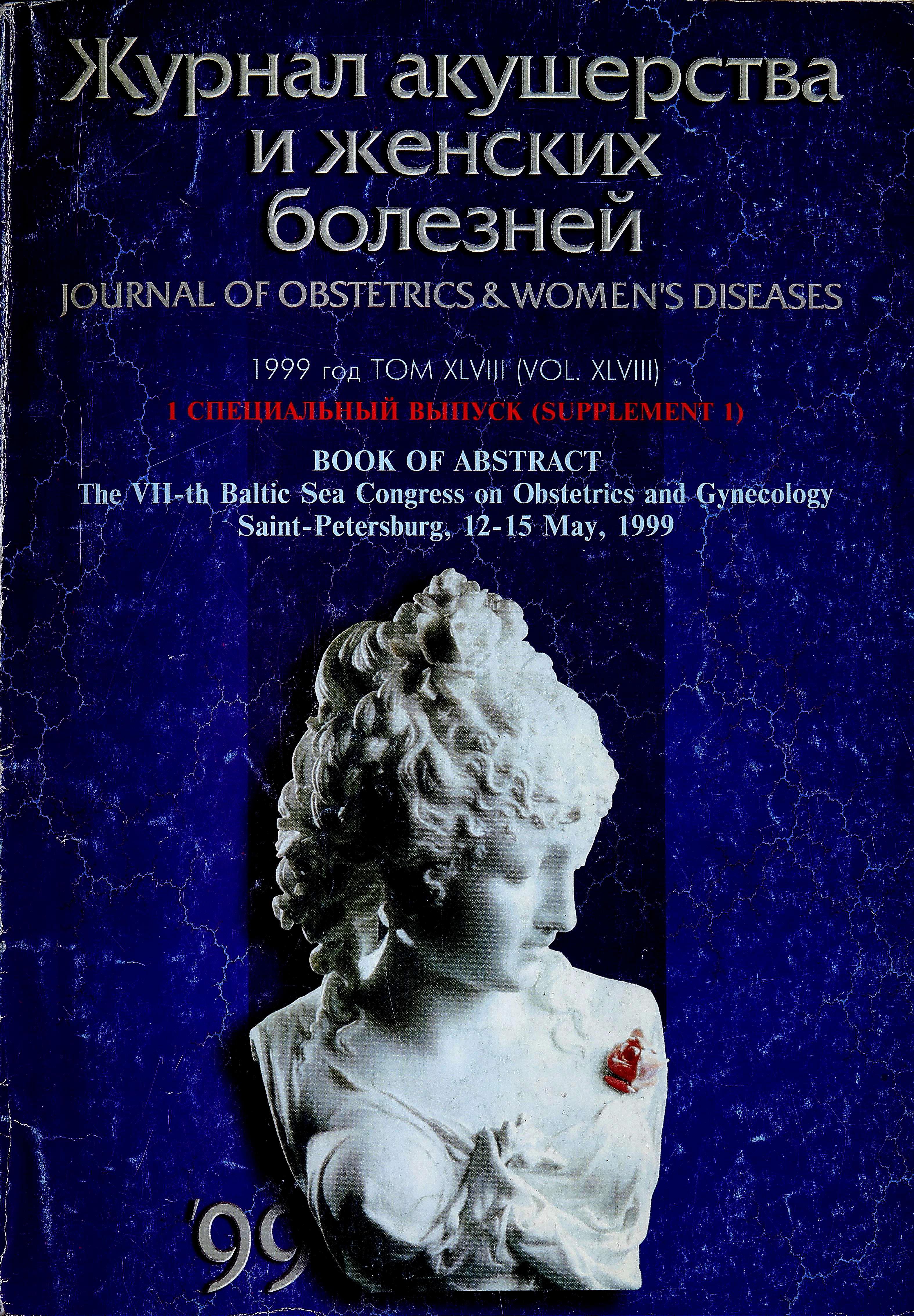Combined color doppler and 3-D ultrasound study of fetal abnormalities
- Authors: Kurjak A.1,2, Kupesic S.1,2
-
Affiliations:
- University of Zagreb
- Sveti Duh Hospital
- Issue: Vol 48, No 5S (1999)
- Pages: 92-92
- Section: Articles
- Submitted: 17.02.2022
- Accepted: 17.02.2022
- Published: 15.12.1999
- URL: https://journals.eco-vector.com/jowd/article/view/101035
- DOI: https://doi.org/10.17816/JOWD101035
- ID: 101035
Cite item
Full Text
Abstract
Considerable progress in sonographic techniques and the introduction of transvaginal sonography in particular have enabled detailed studies to be carried out on early embryonic development. Moreover, Doppler techniques can provide a wealth of information on the physiology and pathology of both the embryonic and the maternal circulation. This non-invasive modality allows analysis of hemodynamic patterns of fetal adaptation to hypoxemia and/or the presence of a severe reduction of oxygen supply to fetal blood and organs.
Full Text
Considerable progress in sonographic techniques and the introduction of transvaginal sonography in particular have enabled detailed studies to be carried out on early embryonic development. Moreover, Doppler techniques can provide a wealth of information on the physiology and pathology of both the embryonic and the maternal circulation. This non-invasive modality allows analysis of hemodynamic patterns of fetal adaptation to hypoxemia and/or the presence of a severe reduction of oxygen supply to fetal blood and organs. By using this as a second level test in complicated pregnancies it is possible to modulate the characteristics of control and management according to the Doppler findings. Furthermore, color Doppler provides information that can contribute to the improved diagnosis of structural abnormalities of the fetus, particularly the heart defects. Color Doppler is essential to determine the course and direction of the blood flow in great vessels, is helpful but not essential in identifying tiny “jets” in areas of regurgitation from the arterioventricular valves, and finally, it is not essential in diagnosing the majority of anatomical congenital cardiopathies which are generally readily identified with two-dimensional ultrasound. Three-dimensional surface view of the fetal body opens a completely new possibilities in the evaluation of fetal anatomy and detection of fetal anomalies. Fetal body or the affected part of the body can be selectively visualized allowing simultaneous visualization of three orthogonal planes. This provides an on-line display of the third plane, which cannot be displayed by conventional ultrasound. This diagnostic method enables the sonographer detailed evaluation of the fetal region of interest, step-by-step simultaneously, using a moving cursor marked by lines at the periphery of the field. Later on, surface view of the fetal body or region of interest can be produced on the screen. The possibility to make a complete three-dimensional image and to rotate it enables the sonographer to evaluate the malformation in different angles giving clearly “plastic" impression of the anomaly.
This way of the diagnosis is especially convenient in cases of facial deformities, cleft lip and palate, malformations or malpositions of hands or feet and spina bifida. It is expected that combined and simultaneous use of color Doppler and 3D ultrasound will offer valuable data in the field of fetal monitoring in not so distant future.
About the authors
A. Kurjak
University of Zagreb; Sveti Duh Hospital
Author for correspondence.
Email: info@eco-vector.com
Croatia, Zagreb; Zagreb
S. Kupesic
University of Zagreb; Sveti Duh Hospital
Email: info@eco-vector.com
Croatia, Zagreb; Zagreb
References
Supplementary files







